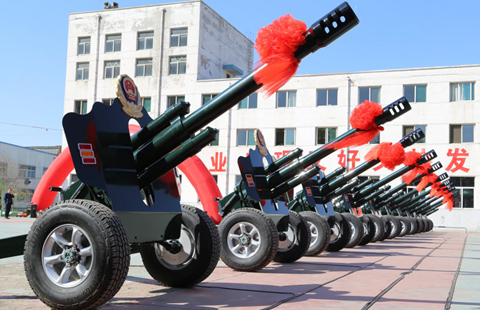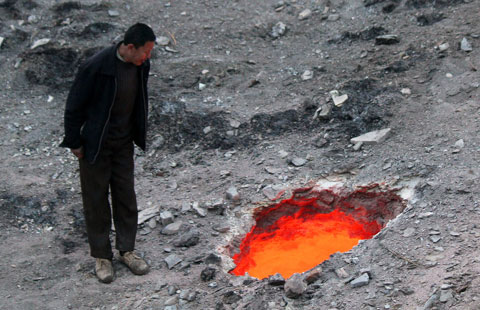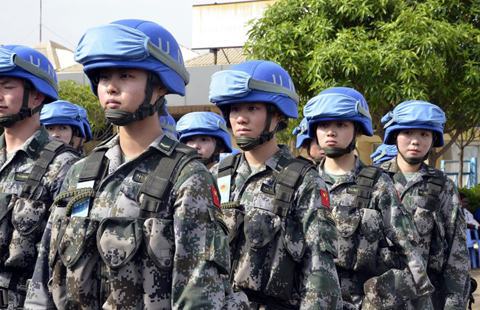US to help China fight tough TB strain
Updated: 2015-04-07 05:26
By Pu Zhendong(China Daily USA)
|
||||||||
Chinese and US experts have pledged greater collaboration to eradicate a multidrug-resistant tuberculosis in China, while touting breakthroughs in the fight against the "silent disease".
"Currently, the US has very low rate of TB, so we have strong technical expertise that we can share with China in areas such as program implementation where China does not have enough experience," said Carol Rao, chief of the epidemiology section of the International Emerging Infections Program with the US Centers for Disease Control and Prevention.
"The US CDC is working in close collaboration with its Chinese counterparts on eliminating TB through measures such as laboratory strengthening and surveillance strengthening," Rao told reporters on the World Tuberculosis Day on March 24.
Last week, the medical journal of the Lancet Global Health published an article about a comprehensive program organized by the Chinese Center for Disease Control and Prevention, which successfully integrated rapid diagnosis, quality treatment and universal access to treatment for multidrug-resistant tuberculosis (MDRTB), a particularly dangerous form of the disease that grows resistant to the common anti-TB drugs.
The program was part of a TB Control Project under a five-year cooperation agreement signed between the Chinese Ministry of Health and the Bill & Melinda Gates Foundation in 2009.
The $33 million program, implemented in Hohhot, Kaifeng, Lianyungang and Yongchuan, has substantially reduced the diagnosis time and treatment initiation for smear-positive MDRTB, which is usually caused by improper treatment during the early stage of the infection.
"Prevention is the best treatment," said Daniel Chin, a senior program officer for TB at the China office of the Bill and Melinda Gates Foundation. "While China has a population more heavily affected than the US, the key for China is to provide diverse treatments and reduce transmission."
It is the first program globally to explore the feasibility of reducing the financial burden of MDRTB treatment on patients by combining health insurance and project funding to increase reimbursement of MDRTB medical care costs to 90 percent. The study also applied rapid diagnostic technology to detect MDRTB for the first time in China.
The World Health Organization hailed the program as in line with its post-2015 TB control strategy, which aims to provide all tuberculosis patients with appropriate care to prevent, diagnose, and treat the disease.
Chin said this year marks a transition in the joint cooperation, as the two sides are concluding the current project and exploring new opportunities. He added that the Microsoft co-founder and philanthropist Bill Gates reaffirmed the foundation's interest in supporting China's anti-TB efforts during a recent meeting with Chinese first lady Peng Liyuan.
"Compared with HIV and Malaria, which are widely known of by the public, TB is a rather silent disease. Efforts should also be made to challenge misconceptions about the disease and discrimination against TB patients," Chin said.
According to the China CDC, just 3 percent of 100,000 new MDR-TB cases were diagnosed and reported, and only 2 percent of patients received the standard treatment in 2011.
Zhou Lin, a chief doctor of TB at China CDC, said the Chinese public is in a dire need of basic knowledge about the disease, with many people associating rumored infertility or birth deformity with cured TB patients.
"There is no scientific connection between pregnancy and the TB disease. Some anti-TB drugs may have side effects on pregnancy, but doctors will prescribe appropriate medicine for the patients in that case," Zhou said. "Fight against the disease also requires us to eliminate social discrimination."
Last year, the Chinese mainland saw an increase of more than 880,000 registered TB patients, a 1.7 percent decline from 2013. There were 2,240 reported deaths in 2014. The air-borne disease is mainly transmitted through inhalation of TB patients' fluids from coughing and sneezing.
puzhendong@chinadaily.com.cn

 Ten photos you don't wanna miss of today
Ten photos you don't wanna miss of today
 Amur tigers come back from the brink
Amur tigers come back from the brink
 Guns prepared to mark Anti-Fascist War anniversary
Guns prepared to mark Anti-Fascist War anniversary
 Tibetans' viral wedding photos contrast city with country life
Tibetans' viral wedding photos contrast city with country life
 Strange but true: Three times a lady
Strange but true: Three times a lady
 Road to Cuba
Road to Cuba
 Trending: 'Gateway to hell' found in Urumqi
Trending: 'Gateway to hell' found in Urumqi
 Last batch of Chinese peacekeeping infantry arrives in S.Sudan
Last batch of Chinese peacekeeping infantry arrives in S.Sudan
Most Viewed
Editor's Picks

|

|

|

|

|

|
Today's Top News
US, Cuba hold highest-level talks since 1961
UN official praises new website that engages Chinese public
Hillary Clinton expected to announce presidential run soon
Shooting outside Washington DC leaves 1 injured
Blocking of chip exports could backfire: scientist
US to help China fight tough TB strain
Rush for H-1B visas is on
Tibetan lawmaker meets US Rep
US Weekly

|

|







